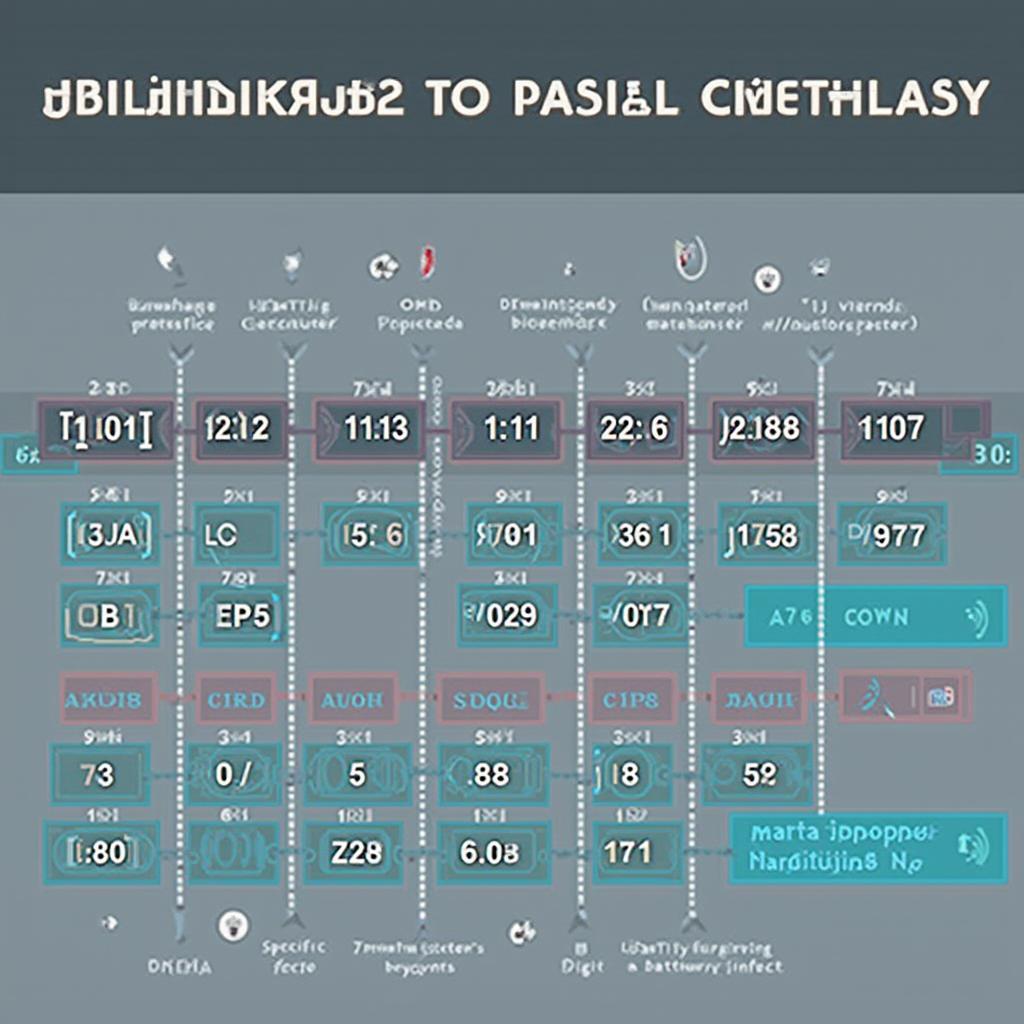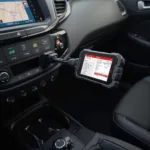OBD2 codes and their meanings are crucial for understanding your vehicle’s health. This guide dives deep into the world of OBD2, explaining everything from basic codes to advanced diagnostics. Learn how to interpret these codes and empower yourself to maintain your car efficiently.
Understanding OBD2 codes empowers car owners to address issues proactively. From minor malfunctions to significant problems, these codes offer valuable insights into your vehicle’s inner workings. This article will equip you with the knowledge to decipher these codes, helping you save time and money on car repairs. You can learn more about specific OBD2 codes related to exhaust systems at obd2 exhaust codes.
Decoding the Secrets of OBD2 Codes
OBD2, or On-Board Diagnostics II, is a standardized system that allows you to access diagnostic trouble codes (DTCs) from your vehicle’s computer. These codes are like clues that indicate potential problems within various systems, including the engine, transmission, emissions, and more. Each code consists of a five-digit alphanumeric sequence, starting with a letter that designates the system where the fault originated. For example, “P” signifies powertrain, “B” stands for body, “C” represents chassis, and “U” refers to network communication.
Understanding OBD2 Code Structure
The first letter, as mentioned above, identifies the system. The second digit indicates the type of code, whether it’s a generic code (0) or a manufacturer-specific code (1). The third digit points to a specific subsystem, like fuel and air metering (1), ignition system or misfire (2), auxiliary emission controls (4), and so on. The final two digits represent the specific fault within that subsystem. So, a code like P0302 would indicate a powertrain (P) generic (0) misfire (3) on cylinder 2 (02).
Having a reliable OBD2 reader is essential for accessing these codes. For BMW E46 owners, understanding the location of the OBD2 port is important. You can learn more about it in this article: prise obd2 bmw e46.
Common OBD2 Codes and Their Meanings
While there are thousands of potential OBD2 codes, some are more common than others. Understanding these common codes can help you quickly diagnose and address issues. P0404 (Exhaust Gas Recirculation Circuit Range/Performance) indicates a problem with the EGR system, which can lead to increased emissions. P0171 (System Too Lean (Bank 1)) and P0174 (System Too Lean (Bank 2)) suggest that the engine is receiving too much air or not enough fuel. P0300 (Random/Multiple Cylinder Misfire Detected) signifies a misfire in one or more cylinders.
For Windows users, using OBD2 reader software can be a cost-effective way to diagnose car problems. Check out this resource for more information: obd2 reader program windows.
What are the most frequent OBD2 codes related to oxygen sensors?
P0135 and P0141 are common codes related to oxygen sensor heater circuit malfunctions.
Advanced OBD2 Diagnostics and Resources
Beyond basic code definitions, understanding the context and related data is crucial for accurate diagnostics. Freeze frame data, live data streaming, and mode $06 data provide a deeper understanding of the conditions under which the code was set. These advanced tools allow you to pinpoint the root cause of the problem, saving you time and money on unnecessary repairs.
Looking for a comprehensive resource on OBD systems? Check out this wiki: obd1 obd2 wiki.
“Accurate diagnosis is paramount in automotive repair. OBD2 codes provide a starting point, but a deep understanding of the system and related data is crucial for effective troubleshooting,” says John Smith, Senior Automotive Diagnostic Technician at AutoTech Solutions.
Conclusion
OBD2 codes and their meanings provide a powerful tool for understanding and maintaining your vehicle’s health. By learning to interpret these codes, you can take a proactive approach to car maintenance, saving both time and money. Understanding these codes is essential for every car owner. For users of the CarScan OBD2 code reader 3013, understanding the manual is key to utilizing its full potential. Find the manual here: carscan obd2 code reader 3013 manual.
FAQ
- What does OBD2 stand for? On-Board Diagnostics II
- How do I read OBD2 codes? With an OBD2 scanner.
- What does a P code mean? Powertrain related fault.
- What is a freeze frame? Snapshot of vehicle data when a code is set.
- Where can I find more information on OBD2 codes? Online resources and repair manuals.
- How often should I check my OBD2 codes? Periodically, or when the check engine light illuminates.
- Can I clear OBD2 codes myself? Yes, with a scanner, but addressing the underlying issue is crucial.
Need help with your car diagnostics? Contact us via WhatsApp: +1(641)206-8880 or Email: [email protected]. Our 24/7 customer support team is ready to assist you.


